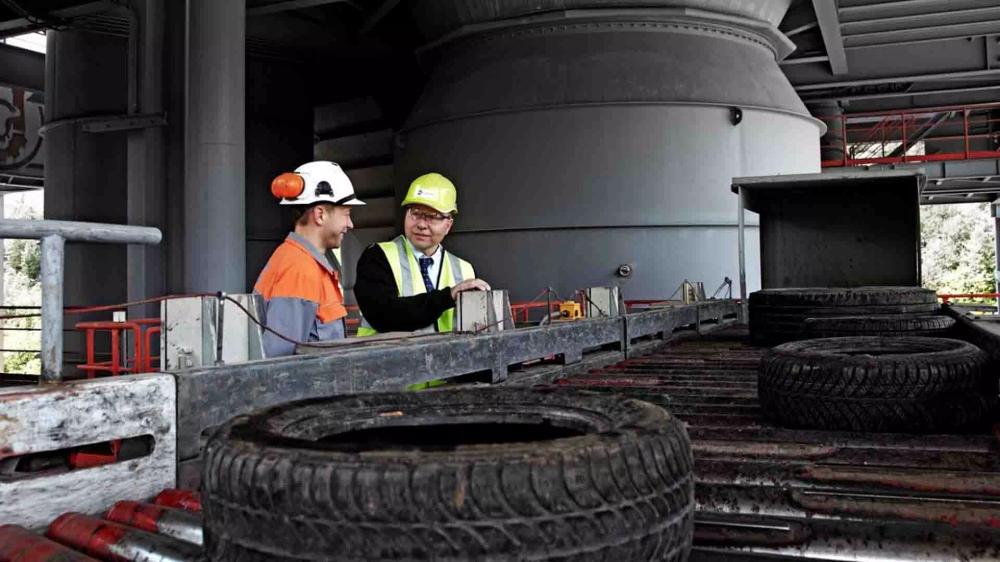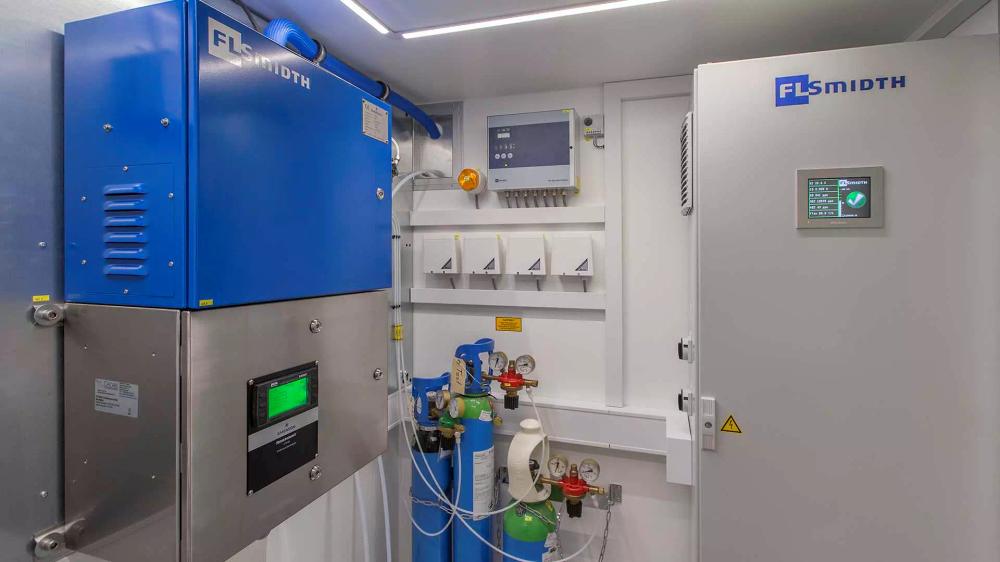article
Reliable gas analysis in high sulphur environments – without acid damage
Industries across the planet are stepping up environmental efforts, all while keeping an eye on the bottom line – and cement plants are no exception to this trend. Many cement plants are looking to minimise their environmental footprint through the use of alternative fuels, such as tyres, and while this can be environmentally beneficial, the higher sulphur content of these alternative fuels results in substantial challenges.
High sulphur processes and the use of high sulphur raw materials elevate the risk of acid damage to gas analysers, resulting in increased repair costs, higher risks from analyser downtime and reduced efficiency. Acid damaged equipment is simply bad for business. Cement plants are also increasingly looking for gas analysis solutions that require limited maintenance while offering greater accuracy.
High accuracy, low maintenance
Particularly well-suited for cement plants dealing with high sulphur processes and raw materials, as well as those considering the future use of alternative fuels, FLSmidth Cement’s KilnLoq® HW Laser System offers the most accurate hot/wet gas analyser with the lowest possible maintenance. Combining two proven technologies – the KilnLoq® probe and Rosemount’s CT5100 laser analyser – the KilnLoq® HW Laser System is the only laser-based hot/wet kiln inlet solution on the market.
The KilnLoq® HW Laser System not only solves the problem of acid damage to gas analysers, it also offers precise readings, potential for process optimisations and efficient, lower cost maintenance.

The impact of acid damage to gas analysers
The combustion of high sulphur materials creates SO2 and SO3 and, in turn, SO3reacts with H2O in the gas phase when temperatures fall below the acid dew point, generating sulphuric acid. Highly corrosive by nature, sulphuric acid creates substantial danger to gas analysers.
Gas analysers that have been damaged by acid need to be repaired, usually by sending them back to the manufacturer. During the often time-consuming repair process, plants have no choice but to run without a gas analysis system, effectively running the kiln blind and decreasing the potential for optimisation while risking increased emissions output.
Prevent acid damage with hot/wet gas analysis
While the coolers used in conventional cold/dry gas analysis systems lower H2O concentrations in the gas-phase, they still allow for acid formation that can cause serious damage in the analyser measurement chamber. Cold/dry systems conduct analysis in dry conditions at temperatures around 5 ̊C – a danger zone for acid formation.
The KilnLoq® HW Laser System stands up to these high acidity challenges by heating all parts to 180 ̊C, thus maintaining temperatures above the dew point of sulphuric acid and preventing the formation of acid condensation.
Optimisations for more than high sulphur conditions
By measuring different gases (such as CO, NO, SO2, CO2 and O2) at the kiln inlet, the KilnLoq® HW Laser System gives kiln operators the insights necessary to optimise fuel consumption and clinker quality.
In addition to allowing for operational optimisations and meeting the challenge of gas analysis in plants with high sulphur levels, the KilnLoq® HW Laser System is also an ideal solution for plants that
- want to measure water-soluble components such as HCl and H2O;
- experience high SO3 values and want to measure SO2;
- want to avoid H2O2 dosing due to safety and maintenance issues.
High-performance kiln inlet gas analysis
Introduced in 2003, the KilnLoq® probe has proven to be the optimum solution for kiln inlet gas analysis with more than 300 references worldwide.
While other products may have bends, obstacles or deposits that can get in the way of samples, the KilnLoq® probe uses the One Pipe system, which samples gas in a straight pipe. The process gas enters the filter housing through the centre of the pipe, where it passes through a coaxial filter for collection and analysis. The filter itself is built into a section of the One Pipe sample probe and the entire probe system is heated to 180°C, preventing the condensation of sulphuric acid.
The unique One Pipe system features several benefits for cleaning, maintenance and inspection:
1. Cleaning sequence setup is adaptable to process conditions;
2. Probes stay clean for longer:
- The straight pipe means no bends or filters in the sample path to trap dust;
- A new process ensures no blockages in the probe’s tip during cleaning;
3. Quick and easy maintenance and cleaning:
- Fully clean the system in less than 3 minutes – up to 40 times faster than any other systems on the market;
- No need to dismantle any machinery for cleaning or maintenance;
- Compressed air jets blast dust and residue out of the sample path in one go;
4. Fast inspections
- View the entire length of the probe’s sample path in seconds – the industry’s fastest visual check.
Proven laser technology
Backed by two decades of reliability, the low-maintenance Rosemount CT5100 laser analyser used in the KilnLoq® HW Laser System has proven dependability, longevity and instant response time, along with a straightforward design and high degree of flexibility. It can measure up to 12 parameters simultaneously, increasing efficiency, and allows easy on-site replacement of the laser modules, ensuring minimum downtime.
Gas analysis without acid damage, unpredictability or stress
Whatever fuel you are using, the KilnLoq® HW Laser System provides a continuously dependable and low-maintenance gas analysis solution. The name says it all – hot/wet analysis avoids the condensation of sulphuric acid that occurs at low temperatures and laser precision gives accurate up-to-the-moment information.
No acid damage. No unplanned maintenance outages. No stress.

Rosemount’s patented laser chirp technique
The CT5100 laser analyser is a Quantum Cascade Laser (QCL) that takes advantage of Rosemount’s laser chirp technique. The patented laser chirp process works by applying power to heat the QCL, which increases laser wavelengths as the temperature rises. The QCL then detects each component of interest by sweeping the wavelength frequencies, before cooling to its original temperature.
This entire process takes less than a microsecond, which enables thousands of spectra to be recorded each second and means that the technique
- expands gas analysis to both the near and mid-infrared range to enhance process insight
- allows for multiple measurements along same optical path
- improves overall gas analysis sensitivity and selectivity
- removes cross interference
- shortens response time
Cost benefits of the KilnLoq® HW Laser System
Removing the risk of acid damage to gas analysers means less maintenance overall and results in these expected savings on man-hours and part costs over five years.



.jpg?w=1080&q=80&auto=format)

